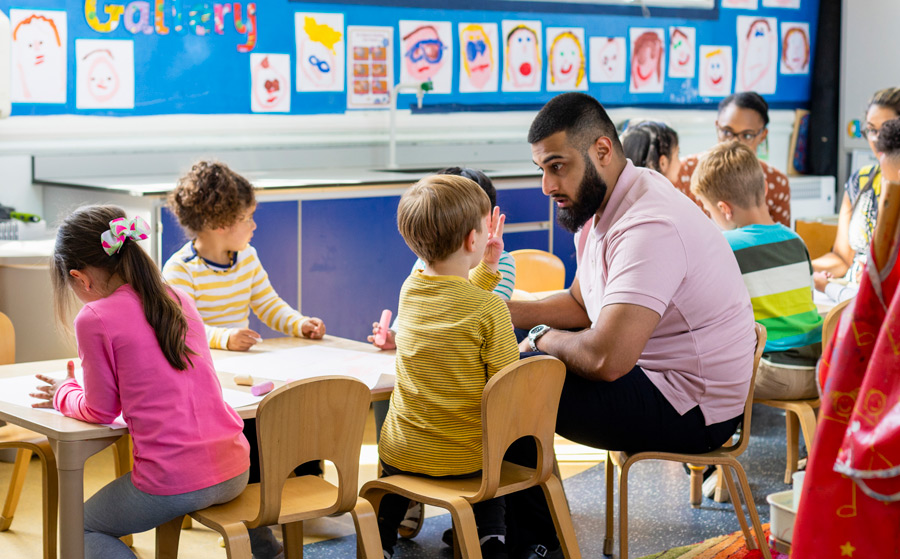
For the first time, Gov. Newsom proposed to put in the extra money to have a second adult in the classroom. But, again, a lot depends on what the quality looks like in classrooms — how well trained is the credentialed teacher? How well trained is the new aide in the classroom?

Personally, I’m kind of in-between, because if we can get preK teachers into district-based preK jobs, their salaries will go up 50 to 60 percent instantly. So, it would be beneficial for those teachers to get the multiple subject credential. Public schools provide a lot of stability for these programs — it is going to be financed out of Proposition 98, which is a much more stable funding source than the discretionary side of the state budget. So, there are a lot of pluses in terms of the Governor’s decision to put his chips into LEAs, but there’s going to be an ongoing conversation. And every school board should thoughtfully engage the nonprofit sector in their locales because they are going to need those nonprofits for wraparound summer programs and these sorts of cooperative efforts with school districts.

I think the other missing link here is that while there are some facilities dollars in the pipeline, they flow very slowly through the state control board. We have districts throughout the state that need to renovate classrooms and the facilities money is going through this very small spigot out to districts. A lot of the key cornerstones are not quite in place, even though school boards are going to be under enormous pressure to create more TK slots by August.
There is law on the books that says that if you move a teacher from a higher grade level to TK, they have to have four classes in early childhood development. Some districts are trying to do that, but in the budget language last summer, the Legislature put that on hold. Some districts, however, are electing to provide in-service training and four community college courses in child development when they bump teachers down. School boards have some options on reassignment and ways to use the new teacher training money that is going to hit the field this spring.
Facilities, which we talked about briefly, are a huge issue: you need little toilets, you need little desks. There are design and facilities questions that school board members are going to face. And another issue is how to develop cooperative relationships with the nonprofit sector so they can provide wraparound services after school and in summer. Summer programs are important because if schools don’t provide that, I think a lot of parents will keep their kids in the current arrangement of state preK or they’ll keep paying an arm and a leg in a private nonprofit. Without a full-day, full-year program, LEAs might have a hard time really pulling kids in. School board members can play a big role in working out these relationships with the nonprofit sector.
I also think reaching out to whatever education agency is nearby that can help them out is super important. And then I think the board and district superintendents have to work with their principals to get them up to speed about the importance and benefits of TK. How might classrooms look different for 4-year-olds compared to 9-year-olds? Just making sure that principals aren’t lining up 4-year-olds at desks in rows and going through the state standards, but they think about young kids differently. And they think about the social-emotional side as well as the cognitive and linguistic side. Here at Berkeley, we’re getting state money from the California Department of Education to do leadership training with principals. The department is thinking broadly and they are putting out money to expand existing in-service leadership programs at Berkeley and UCLA to now include early childhood and TK. So, there’ll be some resources and some trainings going on that school board school boards could tap into.